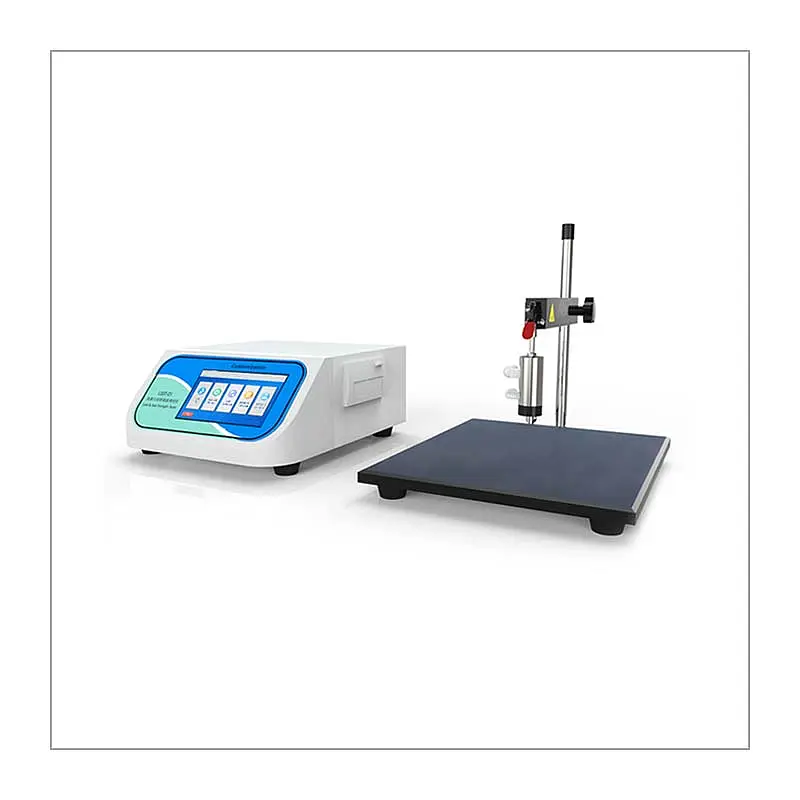Seal strength testers play a crucial role in preventing issues like leaks or contamination in packaging by ensuring the quality and integrity of seals.
Quality Control: Seal strength testers enable manufacturers to perform quality control checks on the seals of packaging materials. By measuring the strength and integrity of the seals, they can identify any weak or faulty seals that might lead to leaks or contamination. This allows manufacturers to identify and address sealing issues before the products reach the market.
Seal Validation: Seal strength testers help validate the effectiveness of the sealing process. By applying controlled and measurable force to the seal, they can determine whether the seal meets the required standards and specifications. If the seal strength falls below the acceptable threshold, it indicates a potential risk of leaks or contamination.
Process Optimization: Seal strength testers allow manufacturers to optimize their sealing processes. By monitoring and measuring the seal strength of different packaging materials, manufacturers can identify the optimal sealing parameters, such as temperature, pressure, or dwell time. This helps ensure consistent and reliable seals, minimizing the risk of leaks or contamination.
Leakage Detection: Seal strength testers can detect even minor leaks or weak spots in the seals that are not visible to the naked eye. By subjecting the seals to controlled pressure or tension, they can identify any sealing defects that could potentially result in leaks or contamination during transportation or storage.
Compliance with Standards: Many industries have specific standards and regulations regarding seal strength and integrity. Seal strength testers help ensure compliance with these standards by providing accurate and objective measurements of seal strength. By meeting or exceeding the required seal strength criteria, manufacturers can minimize the risk of leaks or contamination and maintain product safety and quality.
Product Shelf-Life: Proper sealing is crucial for maintaining the shelf-life and freshness of products. Seal strength testers help ensure that the seals can withstand normal handling, transportation, and storage conditions without compromising the product’s integrity. This helps prevent issues like premature spoilage, contamination, or loss of product quality.
By employing seal strength testers in their quality control processes, manufacturers can identify and rectify seal-related issues, minimize the risk of leaks or contamination, and ensure that their products are properly sealed for safe consumption or use.
How often should manufacturers use seal strength testers in their quality control processes?
The frequency of using seal strength testers in quality control processes can vary depending on several factors, including industry regulations, product requirements, production volume, and the criticality of the seal integrity.
Here are some considerations for determining the frequency of seal strength testing:
Regulatory Requirements: Some industries, such as pharmaceuticals and medical devices, have specific regulations and standards that outline the frequency of seal strength testing. Manufacturers must adhere to these requirements to ensure compliance and product safety.
Industry Best Practices: Even if there are no specific regulations, it is generally recommended to incorporate regular seal strength testing as part of the quality control process. Industry best practices often suggest conducting seal strength tests at predetermined intervals to verify seal integrity consistently.
Batch or Lot Sampling: Manufacturers may choose to perform seal strength testing on a batch or lot sampling basis. seal strength tester Manufacturers This means testing a representative sample from each production batch or lot to ensure the overall quality and consistency of the seals.
Risk Assessment: Manufacturers can conduct a risk assessment to determine the criticality of seal integrity for their specific products. If the consequences of a seal failure, such as leaks or contamination, are severe or pose significant risks to consumer safety or product quality, more frequent seal strength testing may be necessary.
Production Volume and Frequency: Manufacturers with high production volumes may opt to perform seal strength testing more frequently to maintain consistent quality control. This ensures that a sufficient number of samples are tested to provide a reliable assessment of the overall seal integrity.
Supplier or Material Changes: If there are changes in suppliers, packaging materials, or sealing processes, it is advisable to conduct seal strength testing to verify the integrity of the new seals. This applies particularly when there are significant changes that may impact seal quality.
Ultimately, the frequency of seal strength testing should be determined by a combination of regulatory requirements, industry best practices, risk assessment, and the specific needs of the products and manufacturing processes. It is important for manufacturers to establish clear guidelines and protocols for seal strength testing to maintain consistent quality control and ensure the integrity of their packaging.
